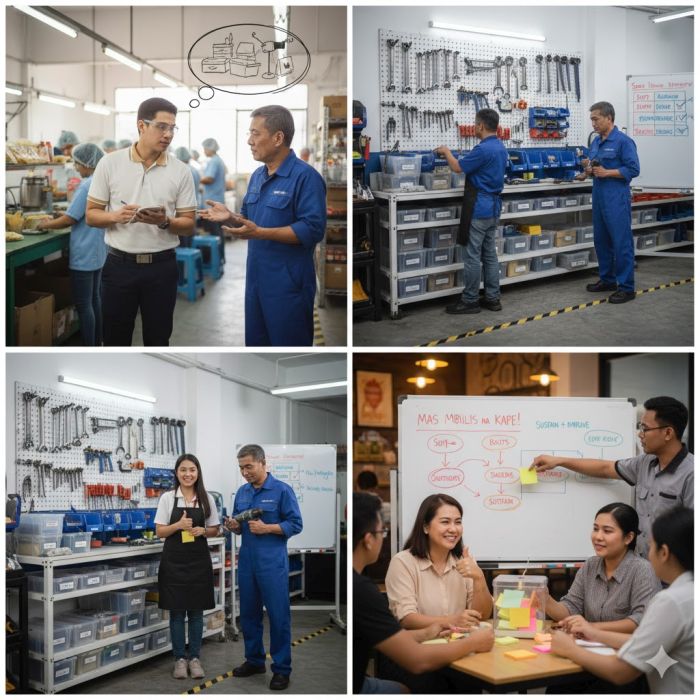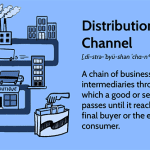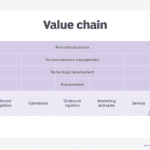Implementing Kaizen Strategy in Your Small Business
 Implementing Kaizen Strategy in Your Small Business in the Philippines
Implementing Kaizen Strategy in Your Small Business in the Philippines
Philippine small businesses thrive on agility and hard work. However, continuous improvement is essential for long-term growth. We introduce the powerful concept of Kaizen strategy here. Kaizen simply means “change for the better.” This philosophy emphasizes small, continuous improvements every single day. You do not need massive overhauls to see results. Instead, focus on small, sustainable changes immediately. Adopting this Japanese principle transforms operations efficiently.
Understanding the Kaizen Framework
Kaizen is not a one-time project completion. It is a never-ending journey toward perfection. This method involves all employees, from the owner down. Everyone contributes ideas for improvement consistently. The goal remains eliminating waste in all its forms. Waste includes unnecessary motion, waiting, and defects. Consequently, your processes become leaner and more productive. Start by changing your mindset about problems. View every mistake as a learning opportunity promptly.
Step 1: Embrace the Gemba Walk
You must understand where the actual work happens first. The Japanese term for the actual workplace is Gemba. Conduct regular Gemba walks across your business operations. Observe processes directly on the shop floor or office. Look for bottlenecks and inefficiencies actively. Do employees search for tools constantly? Are there piles of unnecessary inventory everywhere? Identify problems by seeing them in action immediately. Furthermore, talk to your employees about their tasks openly. Workers often know the best solutions already.
Step 2: Implement the 5S Methodology
The 5S system provides the foundation for Kaizen implementation. This system creates an organized, efficient workspace. It involves five simple steps starting with “S.” Sort through all items in your workplace first. Remove everything unnecessary for immediate work completion. Set in Order all remaining tools logically next. Everything should have a clearly labeled place specifically. Shine your workspace regularly and meticulously. A clean area highlights problems instantly. Standardize these three practices consistently. Finally, Sustain the discipline through regular audits and team commitment. This organized approach reduces wasted time searching for materials.
Step 3: Encourage Employee Suggestions
True Kaizen strategy requires input from everyone. Your employees see daily inefficiencies firsthand. You must create a non-punitive system for suggestions immediately. Encourage staff to identify small problems fearlessly. For example, implement a simple suggestion box or weekly form. Reward helpful ideas, even minor ones, quickly. Acknowledging participation builds engagement effectively. Remember, the goal is quantity of ideas, not just complexity. Small improvements accumulate into massive gains over time.
Step 4: Focus on Quality at the Source
Never pass defective work to the next process step. This principle is called Jidoka or “automation with a human touch.” Empower every employee to stop work if they find a defect. Fixing problems immediately costs less money. This prevents costly rework and waste later on. For instance, a small food business should check ingredient quality before mixing. A service business must verify data accuracy before submission. Quality control becomes everyone’s responsibility quickly.
Step 5: Measure and Standardize Success
You must track the results of your changes carefully. Use simple metrics relevant to your small business size. For example, measure order processing time or error rates. After finding a successful improvement, standardize it immediately. Document the new, more efficient process clearly. Train all relevant employees on this new standard immediately. Standardization ensures everyone maintains the higher performance level. Kaizen strategy makes this new standard the starting point for the next round of improvements.
Step 6: Maintain the Kaizen Cycle
Kaizen demands persistent commitment from leadership primarily. Continue performing Gemba walks regularly and consistently. Keep encouraging employee feedback and suggestions actively. Review your 5S standards quarterly without fail. Sustaining this continuous improvement culture requires patience and effort. Your Philippine small business will gain a competitive edge. You will see higher quality, lower costs, and happier customers. Ultimately, this philosophy ensures long-term business resilience.





This Post Has 0 Comments